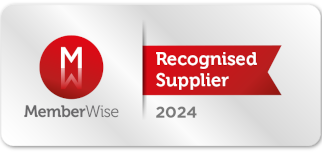
Why use email marketing?
Jessica Bennett,
-
DOWNLOAD
Your Content Marketing Checklist >

-
REQUEST TODAY
A Content Consultation >

Despite rapid development and change across the marketing industry over the last decade, email remains an effective marketing tool.
There are many considerations for email marketing , outlined below, and Dialogue’s Email Marketing Methodology can help you reach your email marketing goals.
1. Why email in 2025?
Email is still a valuable and effective marketing channel
Even in the age of social media, email marketing continues to perform well, giving brands the opportunity to directly connect with customers around the world. The opportunity to segment emails is one of its unique values, making your communications feel personalised for your users.
Coupled with the value of owned or third-party opted-in databases, email can trounce social media. Yes, social is an effective marketing tool, but the increase in content on the platforms matched with peer-to-peer focused algorithms mean your communications can be missed or not even reach your target audiences.
Benefitting from our addiction to smartphones, email marketing still brings in major return on investment for businesses, with mobile phone users checking their email more than three times a day.
According to Campaign Monitor, email marketing brought the best ROI at 3,800% and saw 90% of emails delivered to a recipient's inbox.
How consumers interact with your emails also provides valuable insights into your audience. Are different audience segments performing different actions as a result of your email? Do they always engage with your email at certain times of day? Do they respond best to incentives and discounts, or interesting narratives? You can use this information to refine your email marketing strategy to get the outcomes you want.
In addition, customers now expect more than just promotional content sent to them by email. Be it lifestyle tips, sneak peeks or competitions, customers want email marketing to be less about promoting products and more about brand awareness and information.
What’s the status with email now?
In recent years, the average open rate across all industries was up by 3.5% year-over-year (from 18% to 21.5%) and the click-to-open rate was down by 3.6% (from 14.1% to 10.5% according to Campaign Monitor).
But how can this happen? How can the figures go up and down simultaneously?
One answer is mail privacy protection, a privacy feature released by Apple in September 2021.
The feature gives Apple users more control over the data in their inbox, with MPP pre-fetching (or downloading) an email and its images and, in doing so, marking the email as opened. The introduction of this software has effectively inflated the open rates for Apple users who choose to use this feature, upping the open rates and lowering the click-to-open rates.
Goals for your email marketing campaigns
When sending emails to a customer, it is extremely important to have clearly defined goals.
When creating an email, make sure to ask yourself: what is the purpose of this email? What am I trying to convey? Am I effectively promoting the brand in a meaningful way? What action do I want the customer to take as a result of this email?
By asking yourself these questions, you will be able to boost the effectiveness of your email.
You can use emails to:
- Drive sales by aligning your email marketing campaigns to the user purchase journey of awareness, consideration and decision.
- Boost brand awareness through consistency, solution-focused content, personalisation and highly optimised campaigns.
- Generate and nurture leads by making sign-up simple, segmenting the audience, establishing goals and personalising the customer journey.
- Keep customers engaged by using powerful subject lines and delivering truly valuable content that informs and/or entertains.
- Increase customer loyalty and lifetime value by sending incentives and rewards, asking for and acting on feedback, and tailoring email campaigns to a customer group.
By keeping in mind the purpose of your email, your intention will become clearer to the customers and encourage them to engage with the brand.
Effective ways to market through emails now
There are a variety of new email marketing trends customers are increasingly responding to:
User-generated content
Using user-generated content such as customer reviews, ratings and photos allows consumers to interact with positive feedback from like-minded people and ultimately helps to create a good impression of the brand.
Micro-segmentation
Micro-segmentation requires another tier of segmentation than perhaps you’d normally look at, but analysing each of your customer’s data around needs and motivations then separating them in to separate email list categories will always be beneficial.
Use of artificial intelligence
The major software providers are increasingly integrating AI within their systems, allowing you to analyse market data and improve your overall marketing efficiency, whether that’s optimising survey results and send times, picking effective subject lines or automating responses.
Mobile optimisation
Statistics show that the number of smartphone email users continues to rise and, because of this, it’s important to ensure your emails are optimised to work correctly on a customer’s phone by ensuring a quick loading speed and engaging calls to action.
Why not book a FREE content consultation here to talk to us about email marketing?
2. Typical problems with email marketing
Of course, email marketing requires an increasing level of sophistication both in terms of managing the software, and creating content to ensure you’re maximising the opportunities this marketing channel affords you.
Here are a number of issues businesses typically have that need consideration or a helping hand:
Growing the database
Growing your email list ultimately requires support from other channels where you’re connecting with your audience. One of the most common ways to create a list is by collecting emails at any point of purchase – either physically or digitally – by asking the customer to sign up.
Similarly, you can encourage consumers to join your database across other aspects of your digital footprint. Most customer relationship management software (CRM) makes adding a link to sign up straightforward and easy to add via a sidebar, footer or exit intent pop-up. Likewise, you can add links to your calls to action across social media – even with a platform such as Instagram, which doesn’t allow links through posts, you can include a link in your bio with tools like Linktr.ee, Shorby, Lnk.Bio… the list goes on.
There is also a growing requirement of technical know-how when working with database software packages or CRM platforms, whether it's Mailchimp, Salesforce Marketing Cloud or Eloqua, so ensure you brush up on the skills, and gain some valuable training to ensure that campaigns are built correctly and executed effectively.
There are also several tactical ways to boost your content through age-old approaches like competitions or exclusive downloads and offers as well as embedding a form into the final frames of any videos you’re creating.
At the heart of this is ensuring you have a joined-up content marketing strategy and that you are making it easy for users to sign up and understand the value any email will bring them.
Deliverability
Call it email optimisation, deliverability or even visibility, but you’ve got to get your emails into your sign-ups’ inboxes in the first place. This relates to the robustness of your production systems and checks to ensure you’re not being beaten by spam filters.
Internet service providers will block anything that reads as spam and they’re looking out for typos, attachments, inaccurate sender information, inactive addresses and certain types of word like ‘discount’, ‘congratulations’, ‘cash’… you get the picture. This is an extensive guide on this subject. Naturally, this has a knock-on effect on your sign-up process and the ‘cleanliness’ of your email database.
From a best practice perspective, you’ll also need to activate a Sender Policy Framework (SPF) and Domain Keys Identified Mail (DKIM), as well as ensuring you’re following the email legislation for your country, which is much more challenging if you’re sending to multiple locations. It’s also key to use a trusted sender name and we would also advise that you engage in user-testing to bulletproof your deliverability – you can read more about this below.
Engagement
OK, so you’ve got past the spam filters, but your email campaigns stand and fall on what’s actually in them. This, too, requires an increasing need for specialisation and expertise.
Key considerations are:
- Subject lines – is your email juicy (and relevant) enough for your users to open?
- Personalisation – simply addressing consumers by their name in the subject line or opening gambit is key (see below for more info on this).
- Segmentation - We’ve talked about micro-segmentation, but you need to ensure some type of segmentation for your send list – segmenting your lists can lead to higher open and click-through rates, as well as a 760% increase in revenue.
- Relevancy – nearly 21% of consumers state they unsubscribe if the content is irrelevant, so ensuring that you’re providing meaningful content around age, gender, geolocation, purchase history, page view history, etc. is a must. Having a content marketing strategy and checks in place will help ensure you deliver emails that matter to your database.
- Content – having great content is a significant part of the mix and text needs to lead the way in email marketing. While images, videos and gifs are great at making emails feel more interactive, they can also slow loading times and lead to user frustration.
- Mobile-friendly – using mobile-friendly email templates will also help ensure emails are still readable when they scale to different screen sizes.
- Calls-to-action – don’t forget a call-to-action to activate your consumer. Keeping it simple, making the CTA stand out from a design perspective and use terms like ‘my’ instead of ‘your’ helps make a difference.
Don’t forget that when constructing an email for customers you also need to consider that people are bombarded with emails every single day. Be that work, marketing, or personal information, the average office worker receives 121 business emails per day, according to Finances Online.
Whilst you think your email is incredibly important, this might not be how the recipient feels, so always remember you are a guest in their inbox.
ROI and benchmarking
Naturally, marketers need to know that they’re getting value out of email, so setting objectives like brand awareness, sales, education, etc. is key, as is aligning the user journey.
This means ensuring your tracking and reporting systems are robust and enabled to monitor KPIs such as open rates and click-through-rates, as well as keeping an ongoing record of successes, like best performing content topics or CTAs, for example.
This has a knock-on effect on the pages you’re driving your audience to – you need to ensure they’re optimised, too, and apply a Google URL builder where necessary to follow user behaviour as customers click through.
There are industry benchmarks published online giving you open and click-through rates within your sector. Of course, some more specialist businesses may not find relevant benchmarks, so monitoring your own successes is equally important. Using the right software and/or the right agency or support system will provide you with the kind of reports that are most meaningful for your business.
Take advantage of our FREE content consultation here to talk to us about any email marketing issues you’re struggling with.
3. Dialogue’s email marketing expertise and best practice
Here at content agency Dialogue, we have created our own Email Marketing Methodology, which is a collection of guiding principles following best practice that shapes our approach to email marketing for our clients.
It takes into account all of the above and here are just a few of the other things we consider and include in our methodology.
Data and audience
As referenced above, the more accurate your data, the more effective your email campaigns. Segmenting data to send audience-specific messaging is crucial to ensure your marketing communication reaches the right people.
At Dialogue, we consider regional and linguistic variations, as well as the types of recipient (e.g. customers, prospective members, members, staff). For some of our clients, we also need to factor in different legal requirements for different segments. For example, some countries require specific details about motor vehicle emissions to be included.
Aligning with the buyer journey
Part of segmenting your data means sending the right messages at the right time. Plan your sequence of emails depending on where the recipient is in the customer journey, whether you’re nurturing a lead, providing additional information or looking to retain a customer following a purchase. Ensure you have key outcomes for each email and schedule the series accordingly.
You also need to decide on which data triggers an email send. This could be based on the date the record is added, the date a subscription expires, additional content based on the content viewed, or click behaviour signalling an intent to purchase.
Whatever the segment or user journey message, it is important to create paths for each option in your email creation software, and add rules to handle each variation.
Process
We’ve written elsewhere about the importance of creating engaging content based on audience data. Once this is established, you need to create a content matrix that breaks down which segments are getting which versions of each article.
A master email including all variations from the content matrix can then be created for testing and checking purposes, saving everyone time as any amends only need to be made to one version of the email. Once approved, segmented variations can then be built, removing the potential for errors to occur.
It is then important to undertake:
User testing – of the data extension seed list to ensure the email displays correctly, and test using an application such as Litmus or Email on Acid to check deliverability scores and sender profile ratings, along with how emails are displayed on different devices and in different browsers, including light/dark mode. Test to ensure rules are working correctly in the customer journeys to make sure all recipients are receiving the correct version, based on their segment.
A/B testing/multivariate testing – this testing will help you ‘test and learn’ when it comes to subject headers, design, formatting, content and CTAs.
Personalisation – personalisation refers to details such as including the person’s first name in the subject line of the email or featuring a salutation that greets them by first name. This has the obvious effect of making it seem as though the brand knows the recipient and is friendly with them, giving a more human impression.
Personalisation can also go further by, for example, including information about the recipient’s specific car or bike model if they belong to a club associated with that hobby. Again, this reinforces the idea that the brand really ‘sees’ their customer and treats them as an individual, which can boost brand loyalty.
And it works. Campaign Monitor reports that emails with personalised subject lines are 26% more likely to be opened than those without, and Rich Relevance found that revenue is 5.7 times higher in emails that employ personalisation.
Compliance
Not the most glamorous bit of email marketing, but essential nonetheless and therefore extremely important to Dialogue’s Email Marketing Methodology is compliance.
You need to include a registered business address in the email footer, as well as unsubscribe links or links for recipients to manage opt-ins. It’s also worth including a link to a browser version of the email, just in case your recipient has problems viewing.
To find out more about our Email Marketing Methodology, book a FREE content consultation with us.
In conclusion
By taking into consideration the above and using our Email Marketing Methodology, we’ve been able to deliver excellent results for our clients.
In the car and motorcycle sectors, we’ve achieved open rates between 49% and 54%, and 45% for our equestrian membership mailing lists, regularly smashing industry benchmarks. All coupled with bulletproof accuracy, efficiency, speed and quality.
However you’re tackling email marketing, there’s no doubt it’s still an increasingly viable tool for revenue generation, promotions, driving traffic, user-personalisation and building loyalty.
Take advantage of our FREE content consultation here to talk to us about any email marketing issues you’re struggling with.
Read more insightful articles
See more from the blogThe future of luxury hospitality – Part 3: Wellness and the quest for meaning
The future of luxury hospitality – Part 2: Purpose and sustainability
The future of luxury hospitality – Part 1: Personalisation and technology
Dialogue shortlisted for 14 International Content Marketing Awards 2025
Proud to be a winner of industry awards, recognised as content marketing experts in print and digital media.












